Clinging dramatically to the rugged cliffs of the Italian Riviera, five fishing villages blaze with color against the turquoise Ligurian Sea. This is the Cinque Terre, a landscape so culturally unique it has been designated a UNESCO World Heritage site. For centuries, these towns were isolated, connected to each other and the outside world only by mule paths and the sea. Today, while accessible, they retain a powerful sense of authenticity—a testament to a resilient symbiosis between humanity and nature.
This guide is crafted for the traveler who seeks to understand the soul of this remarkable coastline. It moves beyond the picture-postcard views to uncover the history, flavors, and rhythms of life in Monterosso al Mare, Vernazza, Corniglia, Manarola, and Riomaggiore.
Why a trip to the Cinque Terre belongs on your itinerary
To understand why the Cinque Terre commands such a revered place in the landscape of Italian travel, one must look past the vibrant facades of its villages and into the very sinews of the hills themselves. This is not a destination born of leisure, but of necessity and extraordinary human resilience. Its inclusion on an itinerary is a choice to witness a living monument to the symbiosis between humanity and a formidable natural world.
The story of the Cinque Terre is etched in stone—specifically, in the 4,200 miles of dry-stone walls, the muretti, that terrace the impossibly steep cliffs. This intricate network, built over a millennium without a speck of mortar, is the true masterpiece of the region. It is a testament to generations of anonymous farmers who transformed a hostile environment into a productive agricultural landscape. These walls, which if straightened would exceed the length of the Great Wall of China, are what allowed for the cultivation of olives and the Bosco, Albarola, and Vermentino grapes that define the local wine. They are the reason this landscape was awarded UNESCO World Heritage status, recognized not just for its beauty, but as a continuing cultural landscape that demonstrates a traditional way of life that has existed for a thousand years.
A journey here is, therefore, a dialogue with history. It is an opportunity to walk ancient mule paths not merely as a scenic activity, but as an act of understanding how these villages existed in near-total isolation for centuries, with the sea as their only other lifeline. This unique geography fostered a fierce independence and a culture deeply intertwined with the rhythm of the seasons and the sea. Choosing to visit the Cinque Terre is a decision to support the preservation of this delicate balance, appreciating that every bottle of local wine and every terraced view is the result of what is now called "heroic agriculture"—a daily struggle against gravity and the elements that continues to this day.
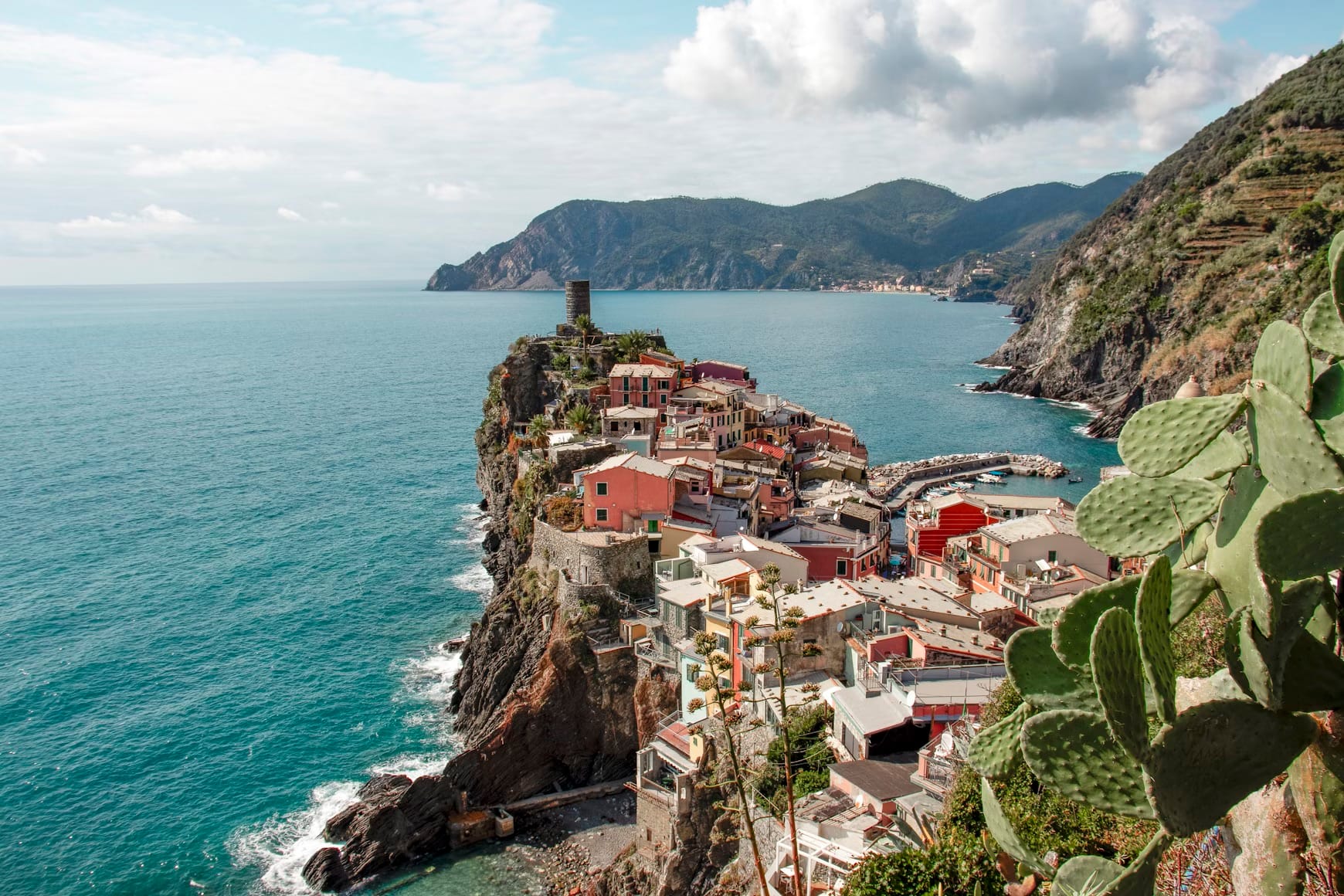
The 5 iconic Cinque Terre villages: a closer look
Each of the five villages, or terre, possesses a distinct character and charm. While intrinsically linked, they offer unique discoveries.
Monterosso al Mare: the beach and the old town
- The largest and most accessible of the five, Monterosso is the only village with a substantial beach (Fegina) and a more resort-like feel. It is divided into an old and a new town, connected by a short tunnel. Key sights include the Church of St. John the Baptist, a beautiful example of Ligurian Gothic architecture, and the Convento dei Cappuccini, which offers serene views away from the waterfront crowds.
Vernazza: the jewel of the harbor
- Often hailed as the most picturesque, Vernazza is a natural amphitheater curving around a beautiful harbor. The central piazza is dominated by the Church of Santa Margherita d'Antiochia, its octagonal bell tower rising directly from the water's edge. For a commanding view of the village and coastline, a climb to the ruins of the Doria Castle, with its 15th-century watchtower, is essential.
Corniglia: the quiet village on the hill
- The only village not situated directly on the sea, Corniglia is perched atop a 100-meter-high promontory. Reached by climbing the Lardarina, a brick staircase of 382 steps, or by a local bus from the station, its elevated position offers a tranquil escape and breathtaking panoramic views. The heart of the village is the Largo Taragio, a small, sun-drenched square, and the Church of San Pietro is a noteworthy monument.
Manarola: the postcard view and sweet wine
- A cascade of colorful houses clinging to a rocky outcrop, Manarola is an artist’s dream. The tiny harbor is its focal point, with swimmers braving the deep waters from the rocks. A short walk up to Punta Bonfiglio provides the classic postcard view. Manarola is also the center of the region's wine production, particularly the celebrated sweet wine, Sciacchetrà.
Riomaggiore: the vibrant southern anchor
- The southernmost village, Riomaggiore, is a cascade of pastel tower-houses that tumble down a steep ravine to a small, protected harbor. The main street, Via Colombo, is a vibrant artery of shops and restaurants. Above the town, the 13th-century Castello di Riomaggiore offers sweeping views and a glimpse into the village's defensive past.
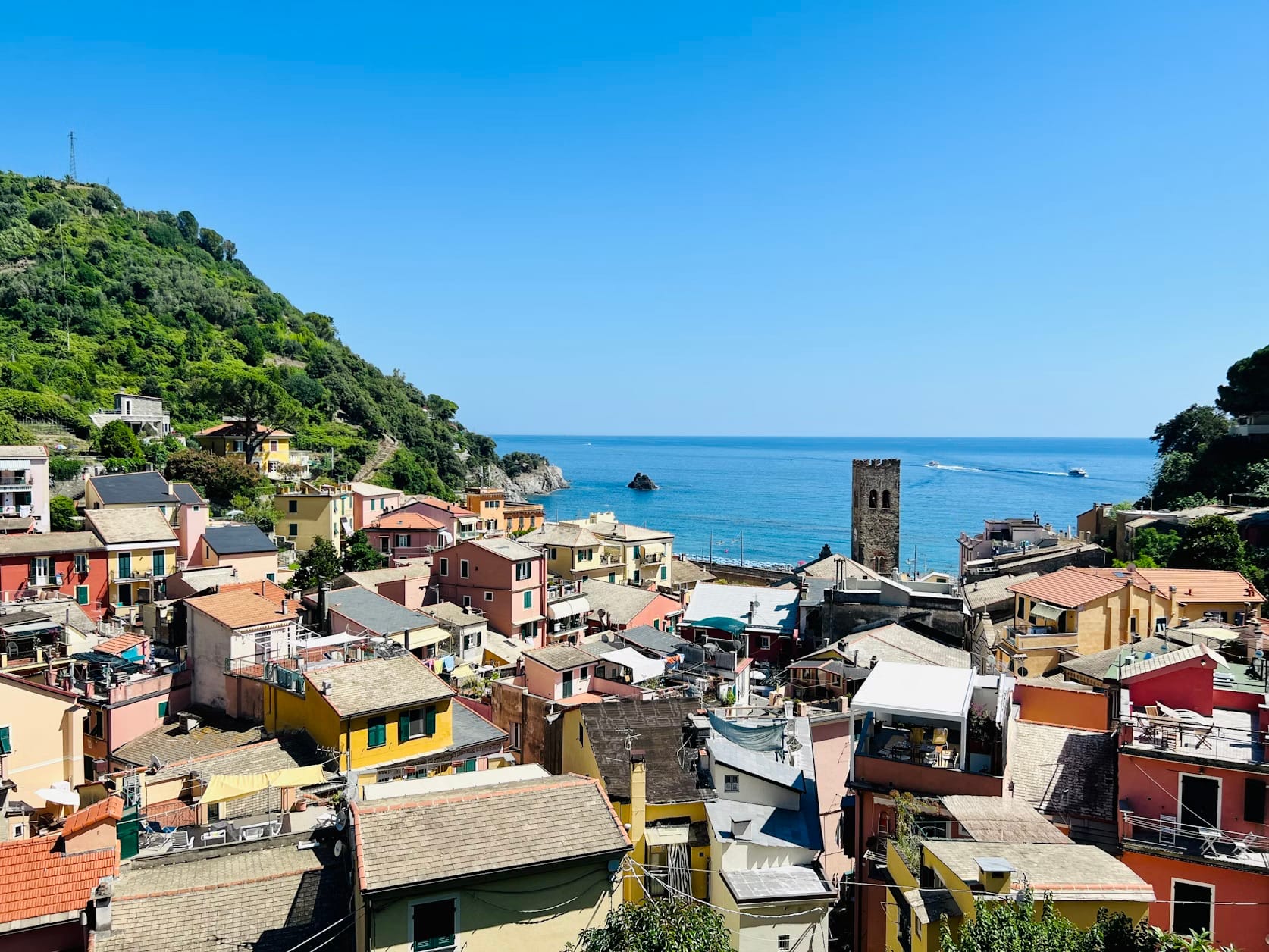
Beyond the blue trail: authentic Cinque Terre hiking & experiences
The true spirit of the Cinque Terre reveals itself to those who venture beyond the bustling main streets.
- The high paths (Sentieri Alti): While the famed coastal "Blue Trail" (Sentiero Azzurro) is iconic, significant portions (especially Riomaggiore-Manarola and Manarola-Corniglia) are often closed due to landslides. The network of higher paths offers a more authentic and less crowded experience. The trail from Volastra (above Manarola) to Corniglia, for instance, meanders through ancient vineyards and offers unparalleled views. These paths are more strenuous but reward the effort with solitude and perspective.
- The sanctuaries: Each village has a sanctuary located high in the hills above it, historically places of pilgrimage. The hike to any of these, such as the Sanctuary of Nostra Signora di Montenero above Riomaggiore or the Sanctuary of Madonna di Reggio above Vernazza, is a journey into the region's spiritual and agricultural heartland.
- A view from the sea: Experiencing the Cinque Terre from the water is non-negotiable. While the regular ferries provide excellent views, chartering a small private boat (gozzo) allows for a more intimate exploration of the coastline, discovering hidden coves and seeing the villages from the same perspective as the fishermen who have navigated these waters for centuries.
- Wine tasting in the vineyards: Seek out a "heroic viticulture" experience. Some local producers offer guided tours and tastings directly in their terraced vineyards. This provides a profound understanding of the labor involved in producing wines like the dry Cinque Terre DOC white and the precious Sciacchetrà.
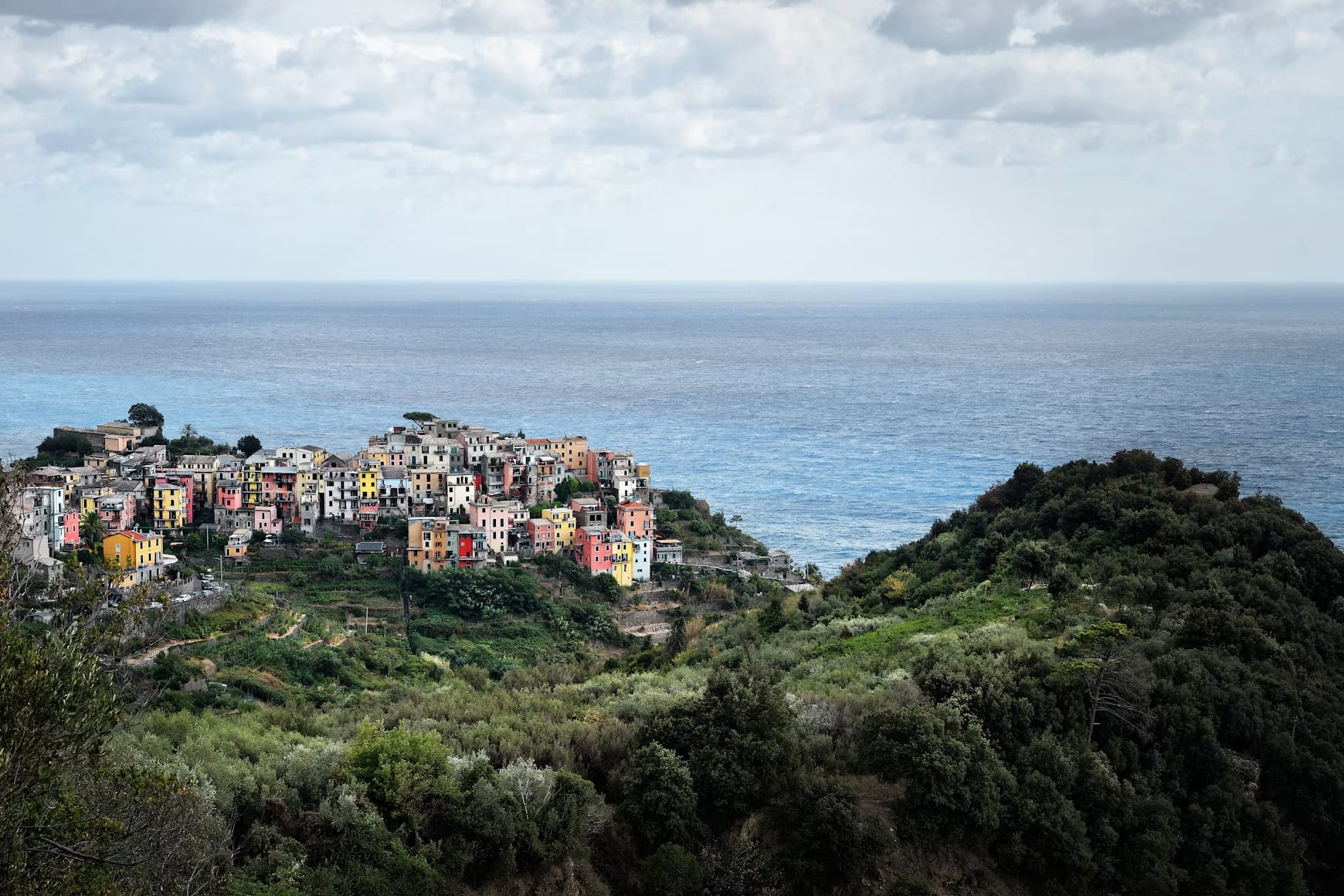
A taste of Liguria: your guide to Cinque Terre's food & wine
Ligurian cuisine is a product of its environment: simple, resourceful, and intensely flavorful. It relies on fresh herbs, seasonal vegetables, pristine seafood, and, of course, exceptional olive oil.
Understanding the local menu: key dishes to try
- Acciughe di Monterosso: Anchovies are the quintessential local fish, served in myriad ways: salted, marinated in lemon juice (al limone), fried, or stuffed.
- Trofie al pesto: While pesto is famous throughout Liguria, trying it here is a requisite. The local version is made with basil, pine nuts, garlic, Parmesan, Pecorino, and local olive oil, traditionally served with short, twisted pasta called trofie.
- Focaccia: A staple of the Ligurian coast, this flatbread is often enjoyed for breakfast or as a snack. It can be plain with sea salt or topped with olives, onions, or sage.
- Farinata: A thin, savory pancake made from chickpea flour, water, salt, and olive oil, baked in a wood-fired oven. A simple and ancient street food.
- Torta di Riso di Monterosso: A traditional savory rice cake, a specialty of Monterosso, often made for festivals.
Sciacchetrà and Cinque Terre DOC: the heroic wines
To speak of the Cinque Terre is to speak of its wine, a liquid narrative of the landscape itself. The winemaking here is famously categorized as viticoltura eroica, or "heroic viticulture," a term reserved for vineyards cultivated in the most extreme conditions. With slopes exceeding a 30% gradient, the work is done almost entirely by hand, from pruning the vines to harvesting the grapes. In many vineyards, monorail systems have been installed to shuttle equipment and harvested grapes up the cliffs, a modern concession to an ancient and back-breaking process.
The primary wine of the region is the Cinque Terre DOC, a dry, crisp white wine that perfectly embodies its maritime terroir. A blend of the native Bosco, Albarola, and Vermentino grapes, it offers a straw-yellow hue and delicate aromas of wildflowers, citrus, and a distinct note of salinity, reminiscent of the sea breeze that bathes the vineyards. Its minerality and fresh acidity make it the quintessential partner for the region's seafood, from salted anchovies to grilled fish.
The jewel in the region's oenological crown, however, is the rare and precious Sciacchetrà. This is a vino passito, a sweet wine of ancient lineage, celebrated by poets and pontiffs for centuries. It is crafted from the very best grapes, which are carefully selected during the harvest and laid out to dry on racks in ventilated rooms for several months. As the water evaporates, the sugars and flavors concentrate intensely. The resulting nectar is then fermented and aged, producing a wine with a rich amber color and a complex bouquet of dried apricots, honey, and toasted nuts. Sciacchetrà is not a dessert wine in the typical sense; it is a vino da meditazione, a meditation wine, best sipped slowly on its own after a meal, perhaps with a small piece of aged cheese. Its production is limited and its value high, a fitting tribute to the immense labor required to create it.
Local dining etiquette and tips
Navigating the dining scene in the Cinque Terre, as in much of Italy, is an experience enriched by understanding its customs. Meals are unhurried, revered moments of the day, and adhering to local etiquette shows respect for the culture.
- Reservations are essential: In a region as popular as the Cinque Terre, especially from May through September, securing a table at a quality restaurant requires advance planning. It is highly recommended to book dinner reservations at least a day or two in advance, particularly for establishments with sea views or strong reputations.
- Understanding the Coperto: Nearly every restaurant bill will include a coperto. This is not a tip; it is a fixed per-person cover charge for the bread, olive oil, and the table setting. It is a standard and unavoidable part of dining out.
- The structure of the meal: A full Italian meal consists of several courses: the antipasto (starter), primo (first course, typically pasta or risotto), secondo (second course, usually meat or fish), and dolce (dessert). It is not obligatory to order every course. Ordering just an antipasto and a primo, or a primo and a secondo, is perfectly acceptable.
- Tipping customs: Tipping is not obligatory or expected in the way it is in the United States. The service charge is generally included in the bill (listed as servizio) or covered by the coperto. If the service was exceptional, leaving a few extra euros (uno o due euro a persona) is a gesture of appreciation, but leaving a 15-20% tip is not standard practice.
- Water and wine: When seating, the server will ask for your water preference: naturale (still) or frizzante(sparkling). Tap water is generally not served. House wine (vino della casa), available by the carafe (quarto, mezzo, or litro), is often a simple, reliable, and economical choice that pairs well with the local food.
- The aperitivo: This pre-dinner ritual is a cherished tradition. It involves a glass of wine or a light cocktail accompanied by small snacks, a moment to unwind and socialize.
- Dining etiquette: Meals are a relaxed affair. Do not expect rapid service; the focus is on savoring the food and company. It is customary to wait for everyone to be served before starting to eat (Buon Appetito!). Asking for Parmesan cheese on a seafood pasta is considered a significant faux pas.
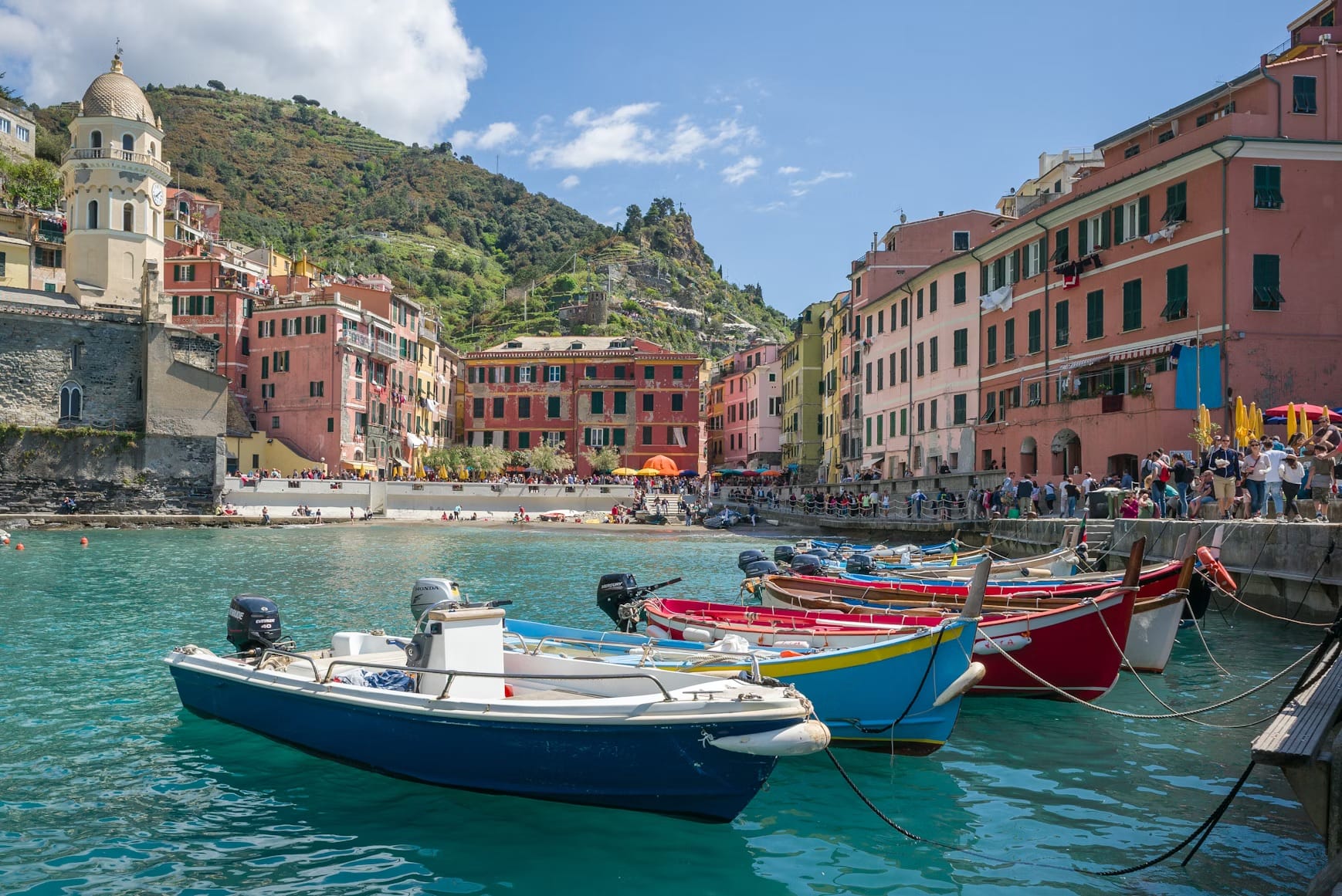
Sample itineraries for your Cinque Terre experience
These itineraries are designed for the cultural traveler, emphasizing depth over breadth.
A 3-day taste of the Cinque Terre:
- Day 1: The southern hub. Base in Riomaggiore. Explore the village, hike up to the Santuario di Montenero for panoramic views. In the afternoon, take the train to Manarola. Walk the scenic path to Punta Bonfiglio for the classic sunset photograph, followed by an aperitivo.
- Day 2: The heart of the park. Hike from Manarola (via Volastra) to Corniglia, experiencing the terraced vineyards up close. Explore Corniglia's quiet lanes and enjoy lunch with a view. In the afternoon, take the train to Vernazza. Explore the harbor, climb the Doria Castle, and absorb the atmosphere of the piazza.
- Day 3: The northern anchor & the sea. Take an early train to Monterosso. Enjoy the morning exploring the old town and perhaps a brief swim. In the afternoon, take a ferry from Monterosso back to Riomaggiore. This provides a magnificent perspective on all five villages from the sea, cementing the geographical and visual memory of the coastline.
A 5-day immersion in the magic of the Cinque Terre awaits:
- Days 1-3: As above, but at a more relaxed pace.
- Day 4: beyond the five. Take a train or ferry to Portovenere. This stunning village, while not officially one of the Cinque Terre, is part of the same UNESCO site. Explore the Church of San Pietro on the rocky headland and the imposing Doria Castle. The rugged beauty of this "sixth town" provides valuable context to the region.
- Day 5: culinary exploration & relaxation. Dedicate the day to a specific interest. Participate in a pesto-making class, arrange for a private wine tasting with a local vintner, or take a more challenging high-path hike, for example, from Riomaggiore to Portovenere (a demanding but rewarding trek).
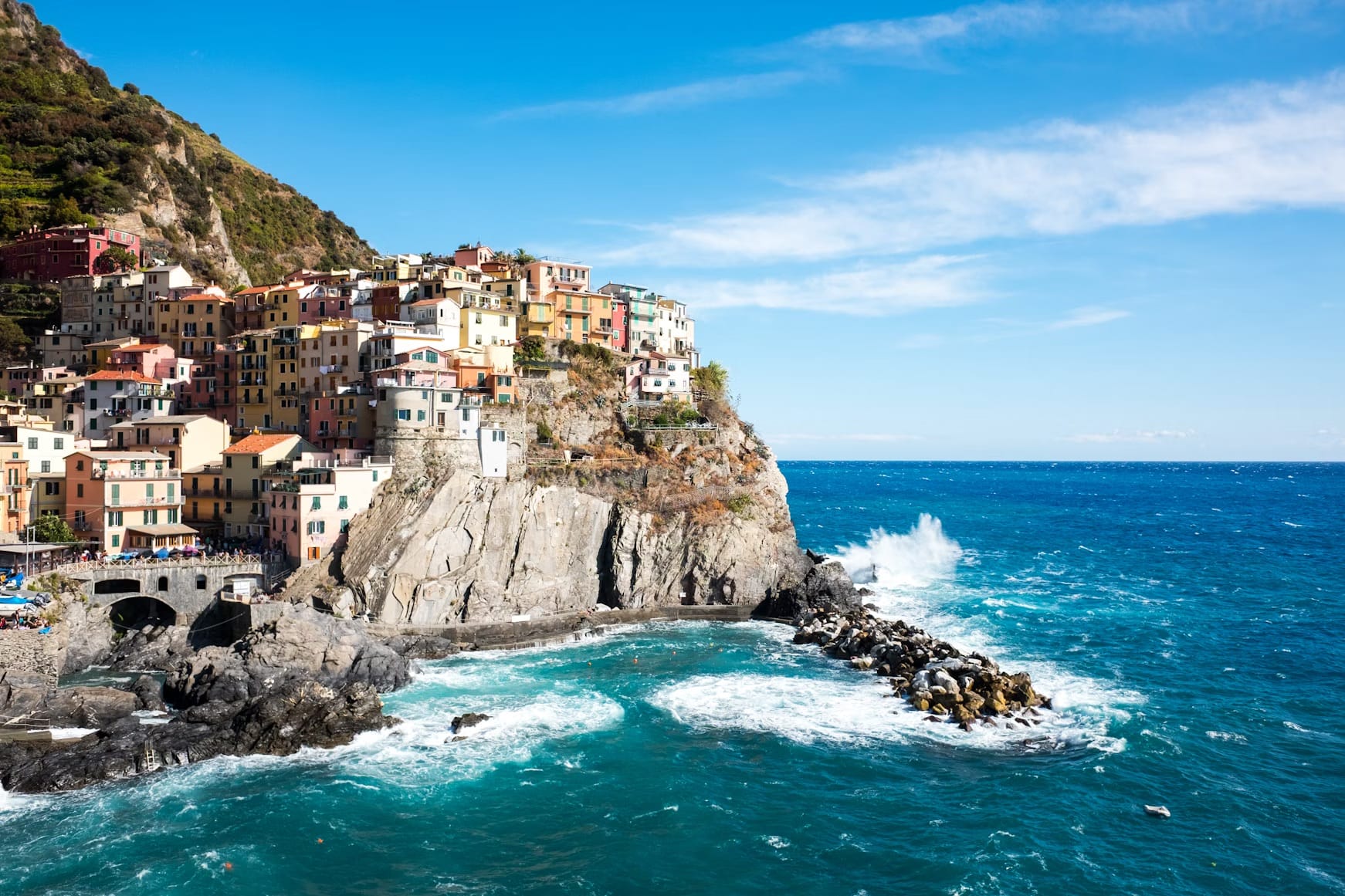
Planning your Cinque Terre journey: a practical guide
Meticulous planning is key to a successful trip, particularly in a region with unique logistical challenges.
Best time to visit the Cinque Terre
- The shoulder seasons—late April to May and September to early October—offer the best balance of pleasant weather and manageable crowds. The summer months (June-August) are very hot and extremely crowded.
Getting around: the train, ferry, and trails
- The most practical way to arrive is by train to La Spezia (from the south/east) or Levanto (from the north/west), and then take the local Cinque Terre Express train. This train connects all five villages frequently and is the most efficient way to travel between them. Driving is strongly discouraged; cars are not allowed in the village centers, and parking is scarce and expensive.
Where to stay in the Cinque Terre
- Each village offers a different experience. Monterosso is best for those seeking beach access and more hotel options. Vernazza and Manarola are incredibly romantic but busy. Riomaggiore offers a vibrant village feel. Corniglia is the quietest and most secluded. Staying within one of the five villages provides the most immersive experience, allowing one to enjoy the magical evenings after the day-trippers have departed.
Good to know
- Comfortable, sturdy walking shoes are non-negotiable. The terrain is steep and uneven everywhere, not just on the hiking trails. Pack layers of clothing, sun protection, and a reusable water bottle (fountains with potable water are available in each village).
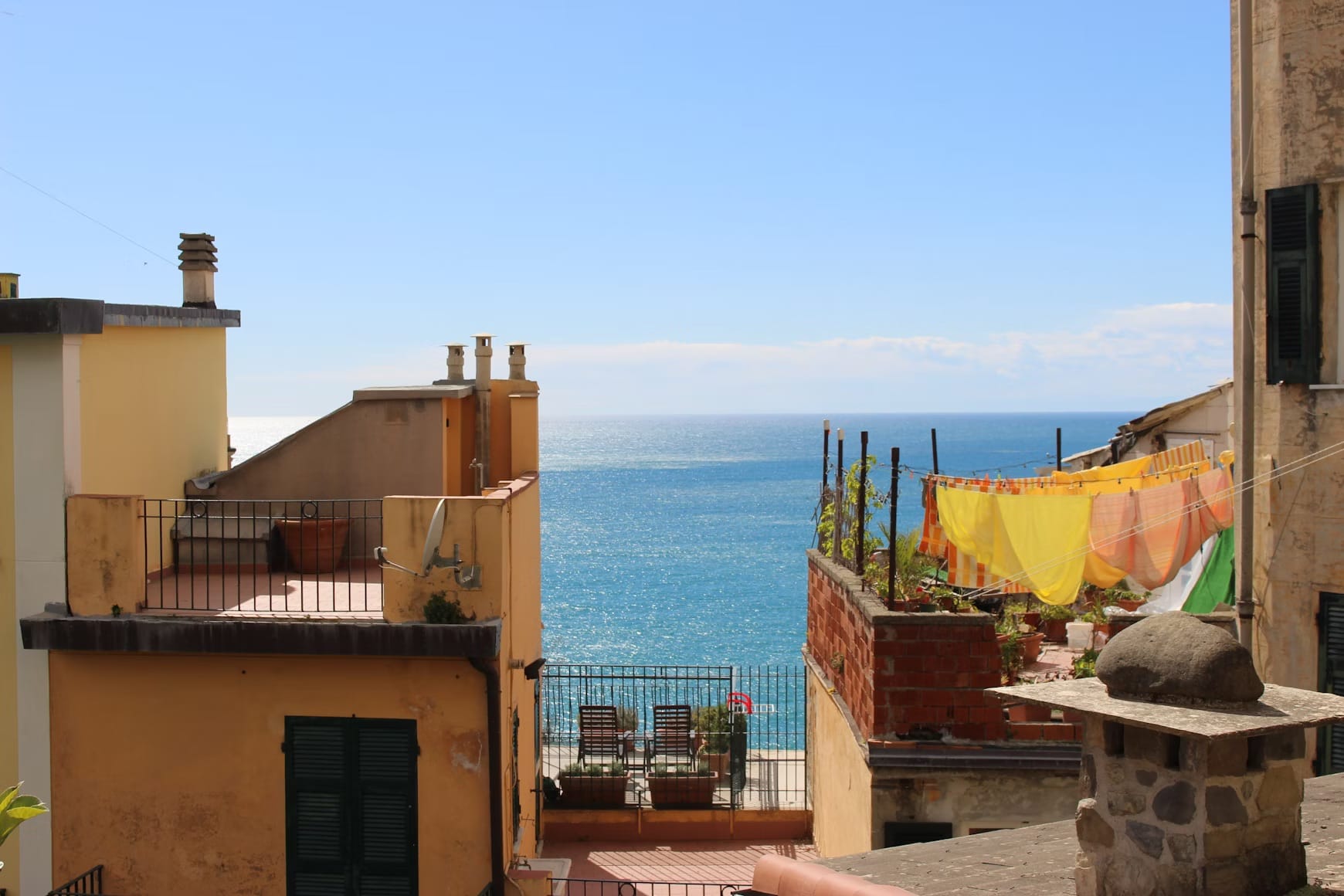
Your Cinque Terre questions answered (FAQ)
How many days are truly needed for the Cinque Terre?
- For a meaningful experience that goes beyond a fleeting glimpse, a minimum of three full days is recommended. This allows for the exploration of all five villages at a comfortable pace, a significant hike, and time to enjoy the local cuisine and atmosphere without rushing. A five-day stay allows for a deeper dive, including visits to sanctuaries, a day trip to Portovenere, or simply more time for relaxation.
How physically fit is it necessary to be for hiking?
- Fitness levels required vary greatly depending on the trail. The coastal Sentiero Azzurro (when open) is relatively flat on some stretches but still involves many uneven steps. The higher paths, or sentieri alti, are significantly more demanding, with steep ascents and descents. A good baseline of fitness—the ability to walk for several hours and climb numerous stairs—is necessary to fully enjoy the hiking. However, those who do not wish to hike can easily explore the villages using the train.
Is it possible to visit the Cinque Terre with mobility issues?
- The Cinque Terre presents significant challenges for travelers with mobility issues. The terrain is characterized by steep hills, narrow lanes, and countless stairs. Corniglia is the least accessible, being high on a promontory. Monterosso is the flattest and most manageable of the five. While the train connects the villages, navigating from the stations to the village centers can still be difficult.
Is renting a car a good idea?
- In a word, no. Driving to and between the villages is strongly discouraged. The roads are narrow and winding, non-resident traffic is prohibited in the village centers, and parking is extremely limited and located far outside the main areas. The train is, by far, the most efficient and practical mode of transport.
Is the Cinque Terre Card a good value?
- This is an essential purchase. There are two versions: the Trekking Card gives access to the paying sections of the Sentiero Azzurro. The Treno MS Card includes the trekking access plus unlimited travel on the Cinque Terre Express train line. For most visitors, the Cinque Terre Treno MS Card offers excellent value. It provides unlimited travel on the local train line connecting La Spezia, the five villages, and Levanto. Purchasing the train and trail passes separately would almost always be more expensive for anyone planning to visit more than two villages and hike in a single day.
What is the best village to use as a base?
- The choice depends on travel style. Monterosso is ideal for those seeking beach access and more traditional hotel amenities. Vernazza and Manarola offer iconic, romantic settings but can be the most crowded. Riomaggiore has a vibrant, youthful atmosphere with a lively main street. Corniglia is the choice for those seeking tranquility and are willing to climb its many steps for the reward of peace and panoramic views.
Has the Cinque Terre become too crowded to enjoy?
- The region's popularity is undeniable, and crowds are intense, especially midday from June to August. However, an authentic and enjoyable experience is still very much possible. The key is strategic planning: visit during the shoulder seasons (April-May or September-October), stay overnight in one of the villages to experience the magical mornings and evenings when the day-trippers have left, and venture onto the higher, less-trafficked hiking trails to find solitude and unparalleled beauty.
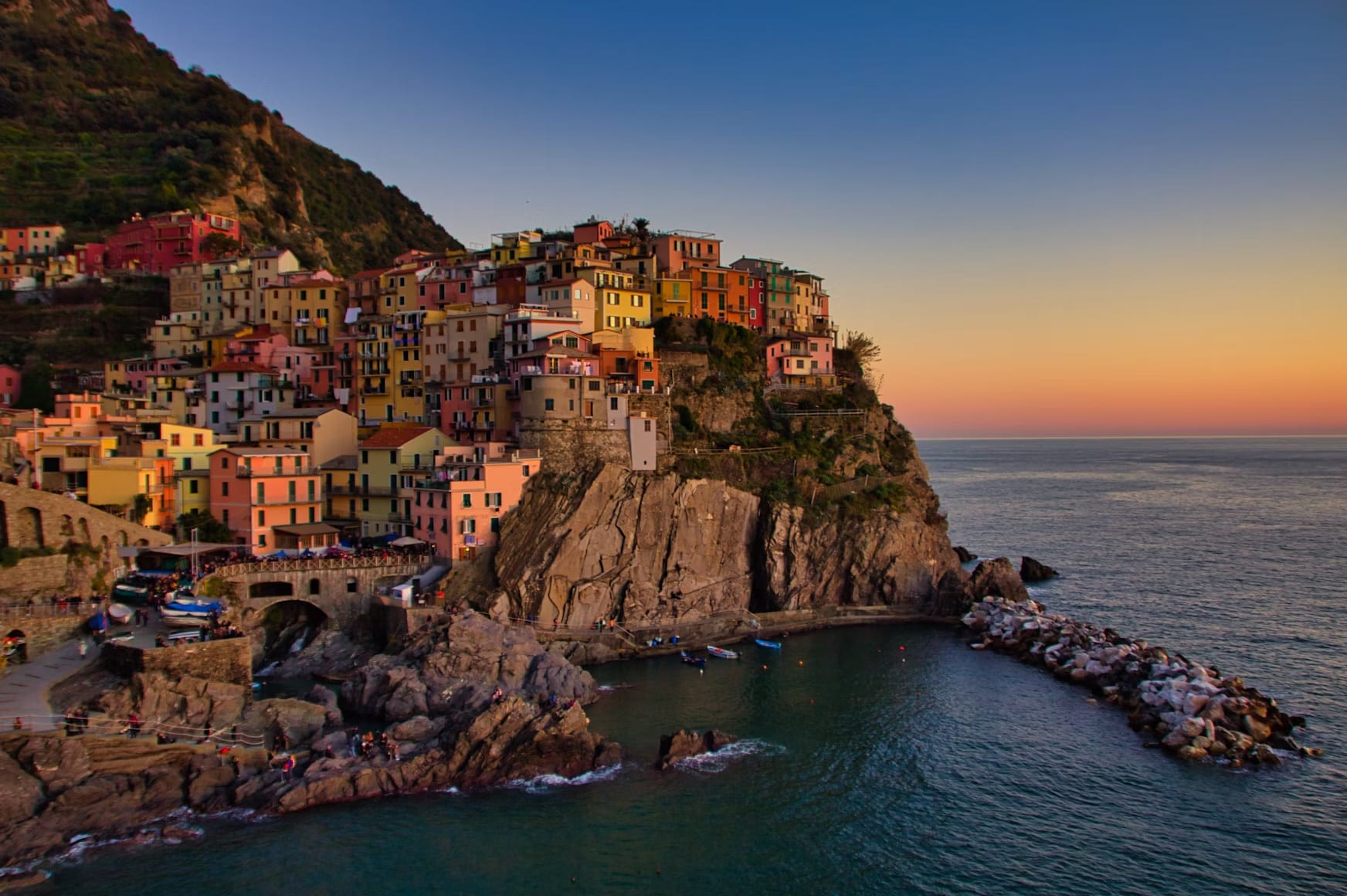
The Cinque Terre is more than a collection of beautiful villages; it is a powerful story of human perseverance, a delicate ecosystem, and a cultural landscape of global significance. It challenges the visitor to look beyond the perfect photograph and to appreciate the sweat and stone, the sun and salt, that have shaped this extraordinary corner of Italy. By exploring with curiosity, respect, and a willingness to venture beyond the obvious, the independent traveler will find not just an iconic destination, but the very soul of the Italian Riviera.








